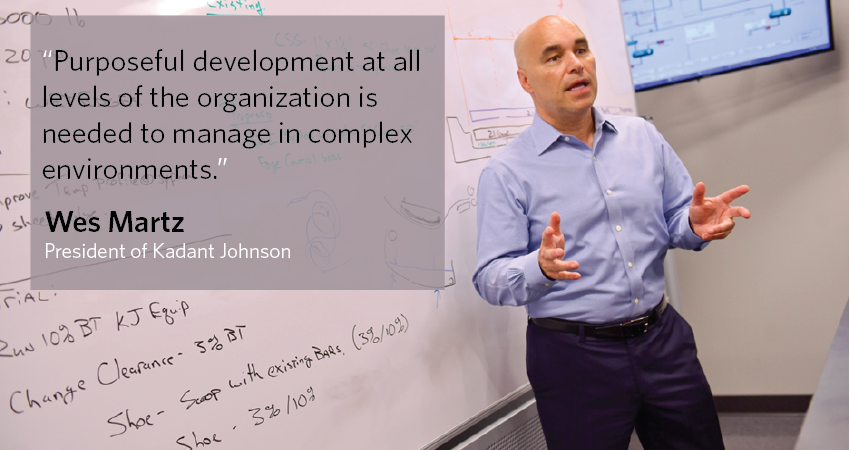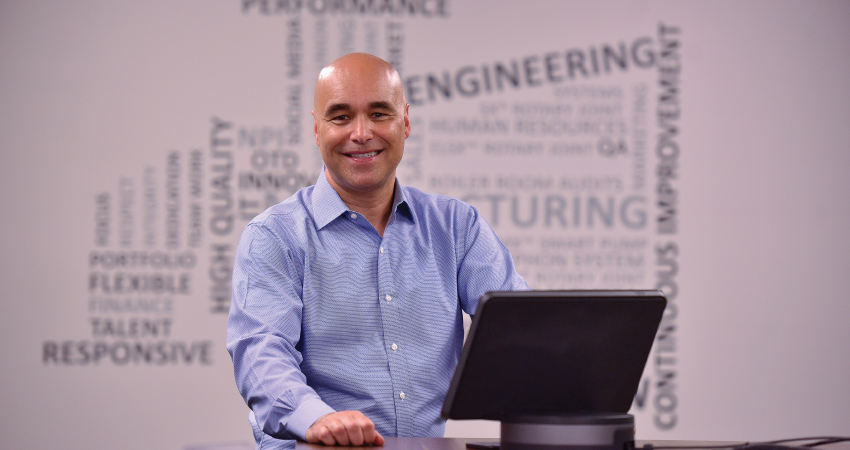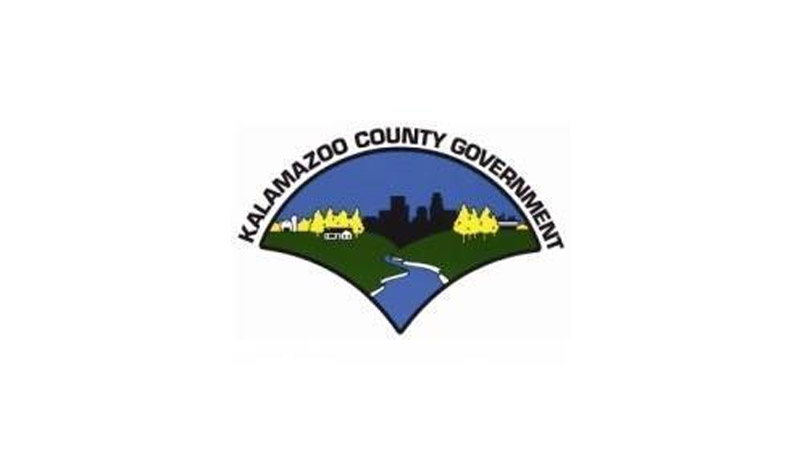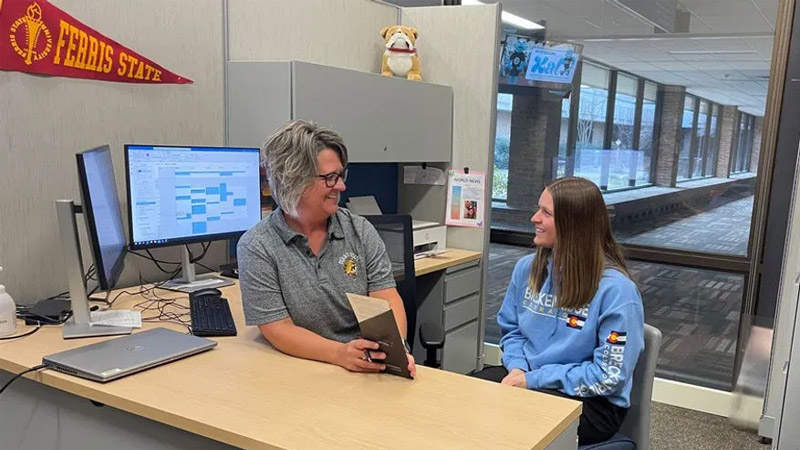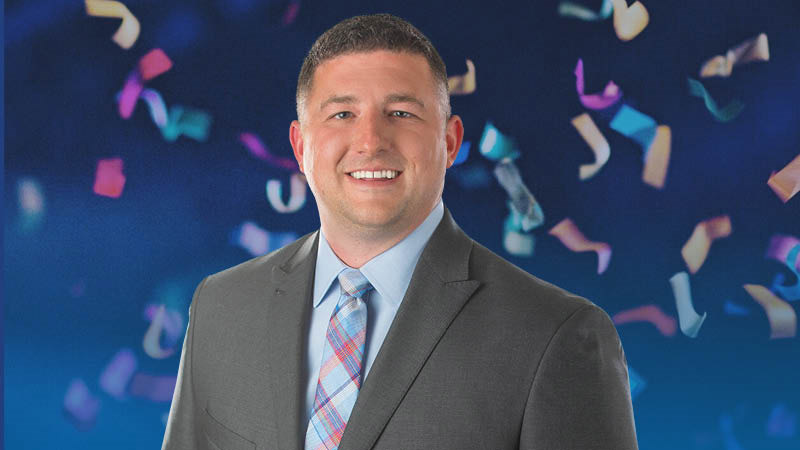Since inventing the rotary pressure joint in 1930, Kadant Johnson, headquartered in Three Rivers, has continued to innovate through almost a century of change to the process industries it serves. The company now offers a variety of flow control equipment and services. After nearly three decades with Kadant Johnson, Wes Martz has become president of this Kadant Inc. subsidiary, focusing on leadership to meet strategic objectives, where each individual plays an active role in meeting the needs of customers and stakeholders. A First & 42 interview with Wes Martz follows.
What will define the next decade for your organization?
People power and connecting with others is our core strength, allowing us to differentiate ourselves and provide value to our customers. Each of us has the charter to lead purposefully and with respect for people, the planet, and long-term business sustainability.
We call this “leading ahead,” a proactive approach to business and people development. We believe that innovation happens more often with individual creativity and flexibility within known boundaries, and even counter-intuitive approaches—not unlike disruptive business models of recent times. There is no “top-down.” We all have the ability and expectation to lead.
Over many decades Kadant Johnson built its reputation on technical leadership and prowess for innovation. From our start in 1930 when George Johnson patented the first steam joint to today, the company’s focus has been on continuous improvement—in its products and its processes. Now, more than ever, it’s about the power of each person to lead.
Like most established manufacturers, we spent our early years almost entirely on product innovation. Our organizational life followed a pattern similar to other manufacturers founded at the turn of the twentieth century—and was deeply rooted in engineering know-how, experimentation, and product innovation. The company’s technical roots provided a solid foundation to expand geographically and then to build economies of scale. This led to an increased focus on building better processes and efficiencies to serve our customers.
How is leadership different now?
In a stable, predictable, and certain environment—hardly what we face today—a focus on product innovation and process improvement generally found success. That was the case for us. But today, that’s not enough to navigate in choppy waters. Purposeful development at all levels of the organization is needed to manage in complex environments.
We are excited to see a wide spectrum of leaders developing themselves and others around them. Our organization becomes healthier and stronger by building this leadership capacity. Feedback and interaction are of vital importance. It’s our way to build on successes and evolve into an evaluative organization—one that embraces the relentless pursuit of continuous improvement and value creation.
In an evaluative organization, performance improvement leads to increased competitiveness and sustainability because of continuous learning, reflection, and action. Rather than accepting current practices, procedures, and policies as forever enduring, the evaluative organization seeks opportunities to improve its people skills, knowledge, and abilities to maximize value to its stakeholders—which includes its owners, customers, and employees, among others. But the only way this is fully integrated into an organization’s culture is if our people capabilities are at the level needed to execute this way of thinking and behaving.
What do you mean when you say “we all have the ability to lead”?
Leadership potential is innate to each of us. While there are common attributes shared among great leaders, each person has the ability to profoundly contribute to others. It’s a matter of knowing how to seek, give, and use feedback to reinforce desired behaviors.
Within our organization, we use a leadership assessment and development tool that focuses on three dimensions of leadership: capacity, commitment, and character. Each dimension is further unpacked to discover what is working and what needs work so our people leaders can be even more effective. Our future as a company depends on continuous people development to enable us to achieve outcomes that matter most for our stakeholders.
How do you measure the collective spectrum of success?
Leadership is not about managing numbers, but leading people to get results. Whether a privately held or a public company, it’s essential to meet financial targets and achieve profitability. But, looking at spreadsheets or KPIs alone is not the answer and won’t help build a performance culture. Looking at people and processes in new ways—that’s how we do even better.
An essential realization is to know you can make a difference. You can change the system. The tough part can be putting this in place. The legacy of “we have always done it that way” is a path to complacency and often a significant hurdle to overcome in a change initiative. While success can breed more success, it can also lead to a false comfort and lack of urgency to drive needed change within an organization.
Describe your “ideal path” to individual growth and exceptional performance.
It starts with engaging in better conversations. That’s where sparks happen and deeper connections are made. Like in most organizations, we find our employees have a strong desire for increasingly more communication. But simply sharing information is not enough. Meaningful and frequent conversations lead to deeper connections among people; stronger connections lead to increased collaboration and engagement. This self-perpetuating cycle can elevate the organization to an even higher level of performance.
As a leader, giving feedback can be one of the most precious gifts you give. Based on this thinking, we spend a lot of time teaching our leadership teams on how to give feedback and how to use it to be even more effective within and across functions.
How does diversity of ideas play a role?
Another way to lead is by bringing your broad experience and personal history of problem-solving to any business situation. Your winning strategy for a Little League team could take customer responsiveness to a whole new level. Diversity in thought is the cornerstone of any sound decision, and we must seek diverse and even contrarian opinions to better inform our decisions as leaders.
How do you deal with mistakes and failures?
Moving past mistakes and avoiding resentment doesn’t just happen with a magic wand. Because we all fail, it’s easy to relate to falling short.
When it comes to blame, there is no you, me, or they. It’s us. We all share the responsibility together for day-to-day successes, big wins, and failure. Failure is often the path to breakthrough innovations. And at a minimum, it’s a learning opportunity. So, forgive, forget, move on, and move ahead.
Do you think COVID-19 changed everything forever, including leadership?
Prior to the virus, we’d already said “good-bye” to the days of a stable, predictable, and certain environment. The new normal already demanded change on a broad and specific basis.
What’s different is social distancing, restricting most travel, visitors, and of course, working remotely. COVID is a good example of turning a situation on its head and coming out of a negative situation with creative solutions that will continue to benefit the company. Because Kadant is an essential business, our operations have continued to run at full capacity to serve our critical infrastructure manufacturing partners. We initiated new protocols related to safeguarding the health and safety of our workforce and I am proud of how every member of Kadant Johnson stepped up to care for themselves and for others. Through it all, we adapted and learned how to perform under challenging circumstances.
People power and a collaborative, high-contact culture already gave us an edge heading into the pandemic and will continue to be the key to success in everything we do.
